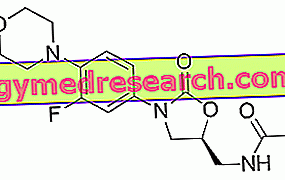GLADIO © is a drug based on Aceclofenac
THERAPEUTIC GROUP: Non-steroidal anti-inflammatory and antirheumatic drugs
IndicationsAction mechanismStudies and clinical effectiveness Usage and dosage instructionsWarnings Pregnancy and lactationInteractionsContraindicationsUndesirable effects
Indications GLADIO ® Aceclofenac
GLADIO ® is successfully used in the treatment of painful diseases on an inflammatory basis of the osteo-articular and musculoskeletal system, both of rheumatic and extra-rheumatic origin.
Aceclofenac, especially in solution for injection, is successfully used in the treatment of acute pain of various kinds (post-operative, colic, gouty)
Mechanism of action GLADIO ® Aceclofenac
Aceclofenac, the active ingredient of GLADIO ®, is a derivative of arylacetic acid known clinically for its marked anti-inflammatory activity, and for this reason it is among the non-steroidal anti-inflammatory drugs.
The key mechanism of action, exercised by this active principle, is essentially due to the ability to inhibit the action of certain enzymes, known as cyclooxygenases, expressed by cells subjected to inflammatory stimulation, and involved in the transformation of arachidonic acid into prostaglandins and prostacyclins.
These molecules, with pro-inflammatory activity, can support the inflammatory process at the site, increasing vascular permeability and blood flow on the one hand, and facilitating the recruitment of inflammatory cells on the other.
The inhibition of this pathway therefore, in addition to reducing the synthesis of the aforementioned chemical mediators, enhances that of other factors known as lipoxins, capable of attenuating the inflammatory process by limiting the damage exerted to the level of the tissues involved.
Given the natural tropism of the aceclofenac, directed mainly at the articular level, the aforementioned actions take place above all on the musculoskeletal system.
Studies carried out and clinical efficacy
1. ACECLOFENAC IN DENTAL PRACTICE
Int J Oral Maxillofac Surg. 2006 Jun; 35 (6): 518-21. Epub 2005 Nov 8.
Work that demonstrates the efficacy of aceclofenac even in common dental practice.
In fact, the study shows that the intake of 100 mg of aceclofenac can significantly reduce the pain associated with the extraction of a molar, especially after 6 hours from the operation, a period in which there is the maximum painful peak.
2. ACECLOFENAC IN THE TREATMENT OF PRIMARY DISMENORRE
Eur J Obstet Gynecol Reprod Biol. 2006 Dec; 129 (2): 162-8. Epub 2006 May 3.
Work that seeks to extend the therapeutic applications of aceclofenac beyond musculoskeletal ones.
More precisely, taking 100 mg of aceclofenac has been shown to be effective in reducing pain associated with primary dysmenorrhea in young women.
3. ACECLOFENAC AND ADVERSE REACTIONS
Primary Aten. 2003 Jun 30; 32 (2): 122-3.
Case report demonstrating the potential side effects associated with the intramuscular administration of aceclofenac. The presence of excipients such as propylene glycol and benzyl alcohol could in fact enhance the hypersensitivity reactions associated with the active ingredient, resulting in the appearance of necrosis at the injection site.
Method of use and dosage
GLADIO ®
100 mg coated tablets of aceclofenac;
Powder for oral suspension of 100 mg of aceclofenac;
Powder and solvent for solution for injection for intramuscular use from 150 mg of aceclofenac / 4 ml of solution;
200 mg suppositories of aceclofenac.
The daily dose of 200 mg, to be divided into two different administrations every 12 hours, seems to be effective in the symptomatic treatment of the main affections of inflammatory origin.
The use of GLADIO ® intramuscolo must necessarily be supervised by your doctor, who must in turn define the correct dosing schedule.
Remember the need to adapt the dosage used in patients suffering from kidney, liver or elderly patients.
Warnings GLADIO ® Aceclofenac
The use of non-steroidal anti-inflammatory drugs should be understood as short-term symptomatological therapy, aimed above all at improving painful symptoms.
Long-lasting treatments could in fact facilitate the appearance of side effects, in some cases even serious, exacerbating any pathological conditions already present, especially in the gastric mucosa.
Elderly patients or those suffering from renal, hepatic, gastro-intestinal and cardiovascular diseases, in which the incidence and clinical severity of possible side effects assumes greater importance, should take GLADIO ® with particular caution and under the constant supervision of their doctor, the which in turn should monitor liver, kidney and cardiovascular function parameters.
The patient should also immediately inform his doctor, following the appearance of side effects of any kind, possibly providing for the possibility of promptly suspending the treatment.
It is also useful to remember that the simultaneous food intake may delay the intestinal absorption of the aceclofenac, reducing however the irritative action on the gastric mucosa, thus being useful in patients suffering from gastric pathologies, in which one should also evaluate the possible need to resort to the use of gastroprotectors.
It is advisable to start treatment with the minimum effective dose, in order to avoid the appearance of side effects.
PREGNANCY AND BREASTFEEDING
Given the key role of prostaglandins in supporting the process of cell proliferation and differentiation during embryonic development and fetal growth, it is easy to understand how taking GLADIO ®, during pregnancy, can suppress the expression of the aforementioned chemical mediators, compromising the normal development of the unborn child.
In fact, studies show that the high intake of NSAIDs during pregnancy can significantly increase the incidence of spontaneous abortions and fetal malformations.
The use of GLADIO ® in pregnancy is also not recommended due to the potential side effects induced by aceclofenac on the mother such as the increased risk of hemorrhage and the reduction in the frequency of uterine contractions.
Interactions
One of the typical characteristics of non-steroidal anti-inflammatory drugs, therefore also of aceclofenac, is represented by the numerous drug interactions, which make the intake of NSAIDs to the insidious.
More precisely, pharmacokinetic studies demonstrate how the contextual intake of
- Oral anticoagulants and inhibitors of serotonin reuptake, could increase the risk of bleeding;
- Diuretics, ACE inhibitors, angiotensin II antagonists, methotrexate and cyclosporine could exacerbate side effects, and especially those on the kidney level;
- Non-steroidal anti-inflammatory drugs and corticosteroids could intensify the action of damage to the varicose vein of the gastric mucosa;
- Antibiotics could alter the therapeutic efficacy of both active ingredients;
- Sulfonylureas could determine an altered glycemic control, exerted by the hypoglycemic effect of aceclofenac.
Contraindications GLADIO ® Aceclofenac
Taking GLADIO ® is contraindicated in patients who are hypersensitive to the active ingredient or to one of its excipients, hypersensitive to acetylsalicylic acid and other analgesics, suffering from asthma, nasal polyposis, liver failure, renal to cardiac, intestinal bleeding, ulcerative colitis, Crohn's disease or previous history for the same conditions.
Undesirable effects - Side effects
Different clinical trials and careful post-marketing monitoring show that the use of non-steroidal anti-inflammatory drugs, including aceclofenac, may be associated with the appearance of different side effects, concentrated above all at the level:
- Gastrointestinal with the appearance of nausea, abdominal pain, vomiting, diarrhea and dyspepsia and rarely gastritis and peptic ulcers;
- Nervous with central manifestations such as drowsiness, dizziness and headache;
- Dermal with the appearance of hives, rash, bullous reactions and photosensitivity;
- Hematic with granulocytopenia and thrombocytopenia.
In addition, chronic intake of non-steroidal anti-inflammatory drugs could increase the incidence of serious side effects on the cardiovascular system, liver and kidney.
Note
GLADIO © is salable only with a medical prescription.



